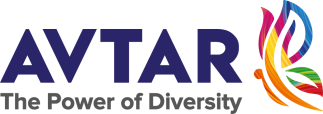Diversity in the workplace is steadily gaining much deserving attention and momentum. From sourcing to screening, and finally, shortlisting candidates irrespective of age, race, gender, physical ability, sexual orientation, religion, etc. companies are redefining their hiring strategies to acknowledge the power of diversity.
However, hiring diverse employees is only one part of the puzzle. What comes next is crucial. How do you retain employees? How can organizations create a sense of belongingness amongst them? What drives their success?
Diversity without inclusion can lead to a work culture of conflicts and chaos. When people don’t feel included, they fail to bring their unique perspectives and interests to the discussion table. The loss is for both as a team and as an organization. Diversity makes a strong workforce. And inclusion supports the strong workforce to bring their best selves to work and deliver better results.
Leadership – biggest allies
Initiation of inclusivity begins with inclusive leadership. The C-suite of an organization should develop and refine inclusive leadership skills of relationship building, empathy, humility, and recognition before getting on board to set an inclusive tone for all.
The ripple effect
Once the leadership team models the behavior expected to make employees feel seen, heard, and valued, the team managers take charge to lead their teams equitably and inclusively. They encourage participation. And this, in turn, benefits the diverse team members leading to better innovation and problem-solving.
Create policies that uphold inclusion
- Setting up a D&I committee with diverse employees can serve as a bridge between the organization and its employers
- Inclusion should be promoted as the company’s core value since the inception of the hiring process
- Communicate inclusion goals and progress
- Initiate employee feedback process
- Evaluate non-conscious bias
- Provide gender sensitization training
Use of inclusive language
To walk the talk, or more so, talking the talk, inclusive language (link to eBook) is necessary.
Language possesses the ability to forge meaningful connections. But it can also build a barrier in someone’s sense of belonging. An inclusive workplace should incorporate inclusive language into its processes, products, and overall team culture.
Build safe spaces (sexual orientation/gender/physical ability)
While the full provision of remote working can nudge this inclusion action plan out of the window, a safe and easily accessible workspace is an ideally inclusive workplace. Gender-neutral washrooms, lactation rooms, prayer rooms, and wheelchair-accessible spaces are a few of the many steps in this scenario. For remote workers, digital safe spaces should be a priority.
Back to the basics
Put people first!
In the age of remote working, organizations rely on virtual screens to connect with their employees. The idea is to keep the communication going to build and maintain trust. One-on-one beyond job talks, discussions on mental health wellbeing, creating a safe forum for employees to share thoughts can help in this initiative.
If an organization is committed to reaping the benefits of a diverse workforce, the need to build an inclusive work culture to retain employees is now more than ever.






